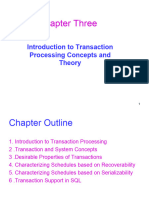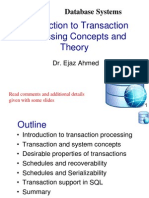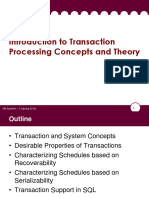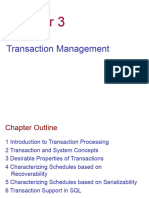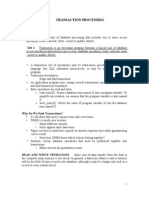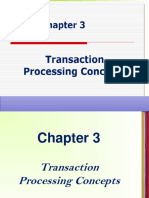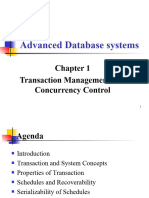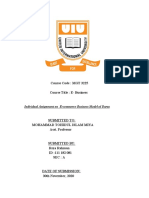0% found this document useful (0 votes)
13 views73 pagesModule 4 TransactionProcessing
This document provides an overview of transaction processing, defining transactions as executing programs that involve database operations like reading and writing. It discusses the importance of concurrency control to prevent issues such as lost updates and unrepeatable reads, as well as the need for recovery mechanisms in case of transaction failures. Additionally, it outlines the ACID properties that ensure transactions are processed reliably and describes the structure and management of transaction logs.
Uploaded by
vinayrb962Copyright
© © All Rights Reserved
We take content rights seriously. If you suspect this is your content, claim it here.
Available Formats
Download as PPTX, PDF, TXT or read online on Scribd
0% found this document useful (0 votes)
13 views73 pagesModule 4 TransactionProcessing
This document provides an overview of transaction processing, defining transactions as executing programs that involve database operations like reading and writing. It discusses the importance of concurrency control to prevent issues such as lost updates and unrepeatable reads, as well as the need for recovery mechanisms in case of transaction failures. Additionally, it outlines the ACID properties that ensure transactions are processed reliably and describes the structure and management of transaction logs.
Uploaded by
vinayrb962Copyright
© © All Rights Reserved
We take content rights seriously. If you suspect this is your content, claim it here.
Available Formats
Download as PPTX, PDF, TXT or read online on Scribd
/ 73













